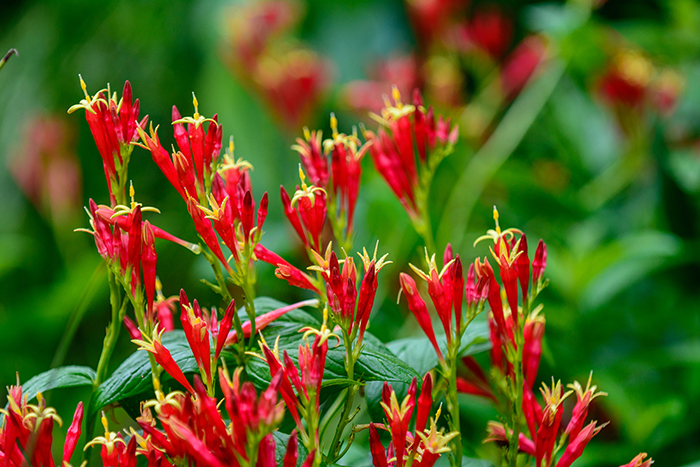
Photo by Cathi Bodine.
Commonly known as Indian pink or woodland pinkroot, Spigelia marilandica is a beautiful perennial native to the Southeastern United States. It typically grows on wooded slopes and streambanks in the wild ranging from Virginia south to Florida, and west to Texas. Despite its scientific name, it has not been found growing naturally in Maryland. Wild populations in North Carolina typically occur in our mountain region, but it also thrives in the Piedmont if planted on a well-drained to moist hillside with morning sun.
After emerging in the spring, this plant rapidly develops into a clump of 1 to 2 feet, with floral buds beginning to form in late spring. Depending on the cultural conditions and the richness of the soil, S. marilandica can flower in May, with sporadic reblooms possible into August. Maximizing floral development requires adequate light with some shade during portions of the day. While the light and moisture requirements for its growth are flexible, too much or too little of either can impact the aesthetic value of a planting. Because high organic matter is conducive to floral production, amending soil with compost is helpful in low-nutrient soil.
While the flowers are noteworthy for their tubular shape and brilliant scarlet exterior surrounding a yellow star-shaped center, they also excel at bringing hummingbirds and other delightful visitors to the garden. However, as one might expect from a member of the logania family—the source of many famous poisons, including strychnine and curare—all portions of the plant are toxic to humans if ingested.
Spigelia marilandica is an excellent native clumping perennial. Its drought tolerance, ecological benefits and aesthetic appeal make it a wonderful option for any partial shade plantings here in central North Carolina.
